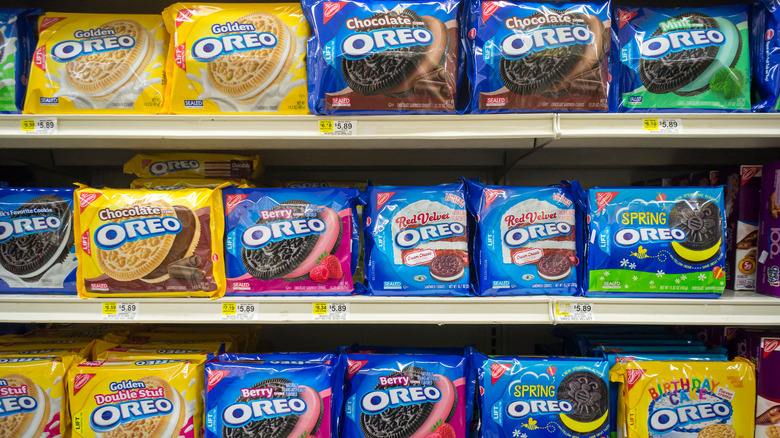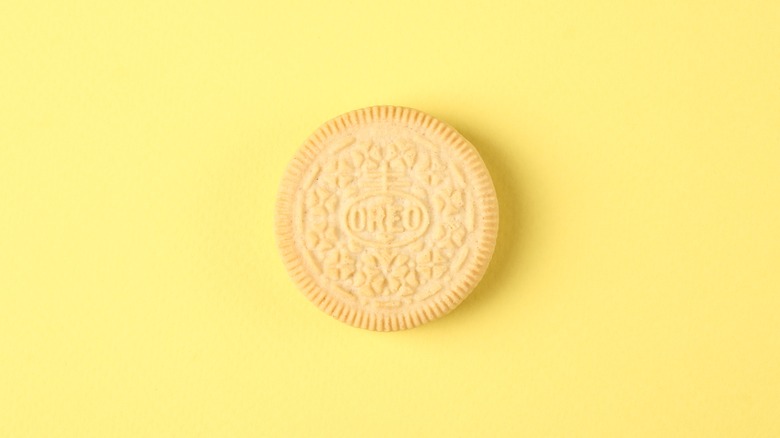The Failure Of Oreo's First Non-Chocolate Flavor
Nabisco, the company behind Oreo, has long claimed that the allegedly wonder-filled treat is the world's favorite cookie (per PR Newswire). However, considering that the brand reportedly sells more than 30 billion Oreos annually, according to Globe Newswire, Nabisco has some pretty powerful evidence to back its iconic marketing tagline. Of course, the original chocolate-and-creme flavor has been largely responsible for the brand becoming a household name. But every Oreo lover knows that one of the biggest factors that make the snack stand out against its cookie competition is its incredible range of flavors.
As noted by Delish, milk's favorite cookie currently boasts more than 85 different versions of the original Oreo recipe. And although many cookie fans may delight in its conventional holiday flavors, Nabisco has made it apparent that when it comes to releasing all-new Oreo varieties, it isn't afraid of veering into the unexpected and downright wacky. But before the brand was confidently unveiling Swedish fish and root beer-flavored Oreos (per The Atlanta Journal-Constitution), Nabisco actually had a hard time selling its first-ever non-chocolate flavor. Here's how the company able to make and market half-Ritz-half-Oreo Frankenstein cookies today struggled to get one of the safest cookie flavors to sell in the 1920s.
The story of Oreo's less-than-loved lemon flavor
According to ThoughtCo, Oreo's long, multi-flavored history began in 1912 with the invention of its beloved chocolate flavor. Although Nabisco's new cookie creation — and its mysterious name – bore a dangerous similarity to another chocolate and creme sandwich cookie called Hydrox, Oreo's sales reportedly left its competitor in the dust.
In the 1920s, Americans started seeing the new lemon-flavored Oreos in the cookie aisle (via Biscuit People). However, despite the company's best intentions, the citrus-inspired snack was not nearly as popular as its chocolate counterpart. The tangy and unloved Oreo was taken off the shelves just a few years after it became available.
But if such a simple flavor couldn't break into Americans' chocolate-focused hearts, how did Nabisco grow to the point it could produce fruit punch-flavored Oreos without stressing over how well the product would sell? According to The New York Times, even though the sale of novelty Oreos has increased since the mid-2010s, the sale of traditional Oreos has gone up almost twice as much — meaning that new varieties of Oreos are also marketing for the original chocolate flavor. And our changing tastes are why Nabisco now produces so many new varieties at an almost alarming rate — including a new and improved lemon cookie that isn't likely to be pulled from Oreo's permanent lineup anytime soon.

